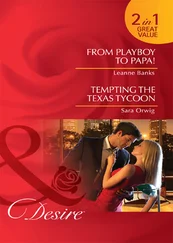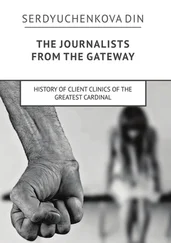1 ...8 9 10 12 13 14 ...34 The notion of God as umpire attained its purest expression in trial by combat. The ritual required plaintiff and defendant to prove that He would take their side in a fight, and after weapons were blessed – to neutralize blade-blunting spells and the like – victory would go to whoever reduced the other to submission or death. There were subtle variations. Women, priests, and cripples generally had to hire professional fighters. German jurisdictions often found other ways to level the odds: a man might be buried waist-deep and armed with a mace, for example, and his female opponent allowed to roam free but given only a rock in a sack. The residents of East Friesland allowed accused murderers to shift the charge onto a third party and prove their innocence by defeating him rather than their accuser. The choices were greatest of all for a defendant in twelfth-century England and France. He could turn the accusation onto innocent bystanders, challenge his own witnesses or, for a few gloriously violent years, appeal a verdict by battling those who had delivered it.
Compurgation and trial by ordeal had little to commend them by modern standards. Although the more blood-curdling ceremonies presumably terrified some guilty people into confessing, only the laws of probability offered any guarantee of occasional efficiency. In an age committed to the notion that a just God was perpetually tinkering with His handiwork, it must however have always been considerably easier to assume the rituals’ effectiveness than to imagine why they might not work. Scepticism was clearly abroad as early as 809, when Charlemagne felt it necessary to bolster ordeals with a law commanding his subjects to believe in them; but even the doubts were generally irrational. Pope Eugene II expressed concerns about perjury during the 820s but he was more worried for the souls of witnesses than the reliability of their evidence – and resolved his misgivings by ordering that defendants undergo the ordeal of cold water instead. Fifty years later, Pope Nicholas I banned trial by combat but he too was no more than suspicious of its value: he replaced it with the ordeal of boiling water, and noted that David’s defeat of Goliath proved that judicial duels might sometimes work.
The mood began to change with the turn of the millennium. As the solstice of AD 1000 came and went with no sign of Armageddon, widespread relief was followed by a sense of rebirth across southern and western Europe. Within less than three years, according to the eleventh-century chronicle of the monk Rudolfus Glaber, men everywhere ‘began to reconstruct churches…It was as if the whole world were shaking itself free, shrugging off the burden of the past, and cladding itself everywhere in a white mantle of churches.’ The physical renewal was complemented by an intellectual revival no less palpable. For the wind that had once moved men like Aeschylus and Protagoras, the belief in reason that had been so long stagnant in Europe, started once again to blow.
Muslim scholars in Córdoba and Persia contributed considerably to the new atmosphere, thanks to their possession of Greek texts that had been lost to Latin Europe for centuries, but so too did the rediscovery in around 1170 of a document that was quintessentially European. And the latter work would ensure that lawyers were at the vanguard of the intellectual revival. For a brightly coloured envelope emerged in Pisa – found, according to legend, by a soldier as he pottered through the ruins of Amalfi – and it contained the core of the vast legal code that the Emperor Justinian had enacted during the dying days of the Western Empire.
The rediscovery of the Digest coincided with a major clash between the papacy and Germany’s imperial throne, and at a time when no source of authority was quite as compelling as tradition, its impact was immense. Clerics were soon flocking to Italy to trawl its text, and as they did so the first great law school to appear in Europe since the days of the Empire coalesced in Bologna. Students were soon producing inventive, ingenious, and mutually contradictory theses aplenty, but when Justinian’s laws were matched against contemporary practice, one fact was stark. They contained not a jot of support for trials by ordeal. The work of canonical scholars, who were simultaneously organizing centuries of papal edicts and saintly pronouncements into systematic compilations for the first time, only made it clearer that the same was true of Scripture. A problem was becoming apparent.
The first generations of scholars hesitated to follow their concerns through, but by the late twelfth century opponents of ordeals were increasingly making themselves heard. One of the most outspoken was Peter the Chanter, a prominent theologian based at the Parisian cathedral of Notre Dame. If trial by battle was so infallible, he wondered, why did people who hired champions invariably prefer seasoned warriors to wizened old men? When three defendants were charged with the same offence, and were therefore required to carry the same red-hot iron in turn, was it really divine intervention that made the last in line least likely to show a burn? And what did it mean to say that God was watching over every ordeal if – as Peter knew had occurred – people were sometimes hanged for crimes that had not even taken place? Peter’s conclusion, reiterated to room after room of spellbound students, was as simple as it was revolutionary. The system tempted the Lord to work miracles more than it tested humanity for its sins, and the clergy should have nothing to do with it.
Complementing such principled criticisms were eminently practical ones. Even at its fairest, the system was as likely to free the guilty as to convict the innocent; and in the hands of priests with an axe to grind, it could be even more arbitrary. So great a discretion in the hands of clerics meant that secular rulers were often suspicious of the system but during the twelfth century the problem became acute. For ordeals finally began to operate against the interests of Catholicism itself.
The late medieval Church was corrupt as old cheese, filled with drunks and fornicators who expected congregations to subsidize their sins, and countless reformers had begun to emerge by the twelfth century. From the Church’s point of view their prescriptions could only worsen the rot. Henry of Le Mans roused rabbles across eastern France for three decades after 1116, with fervent sermons that condemned rituals ranging from baptism to prayers for the dead – and, implicitly, rejected the need for a clergy at all. Peter of Bruis simultaneously led riotous mobs through the south of the country, urging his followers to munch meat on Fridays and make bonfires of their crucifixes, until outraged opponents burned him alive in one of his blasphemous blazes during the early 1130s. Most ominous of all was a philosophical tradition known as dualism. It had been incubating among Christian communities in the Balkans for several centuries and now began to spread through western Europe via the ports of southern France – and it took issue with the Church on the nature of evil itself.
The dualists called themselves Cathars, after the Greek word for purity, and their challenge to Catholicism was profound. Whereas Catholic scholars would be content to spend lifetimes trying to work out why a benevolent and omnipotent God seemed so tolerant of unpleasantness on earth, the heretics plumped for a very simple explanation: that He had no choice. The world in its entirety, they believed, lay firmly under the control of Satan and life amounted to an unhappy moment of incarceration within a tomb of flesh. The soul’s salvation demanded abstention from sex, meat, and dairy products, ideally in person but alternatively through one of the Cathars’ abstemious clerics. Those who grasped the truth and confessed their creed at the blissful moment of death could expect an eternity of ethereal perfection.
Читать дальше
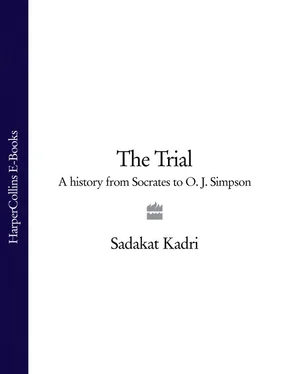
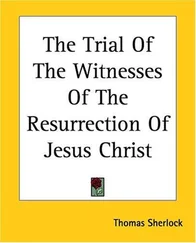
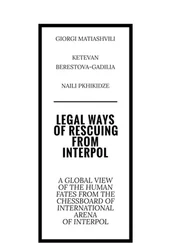
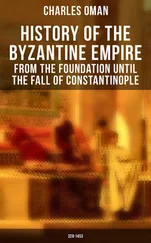
![Theresa Cheung - The Dream Dictionary from A to Z [Revised edition] - The Ultimate A–Z to Interpret the Secrets of Your Dreams](/books/692092/theresa-cheung-the-dream-dictionary-from-a-to-z-r-thumb.webp)
